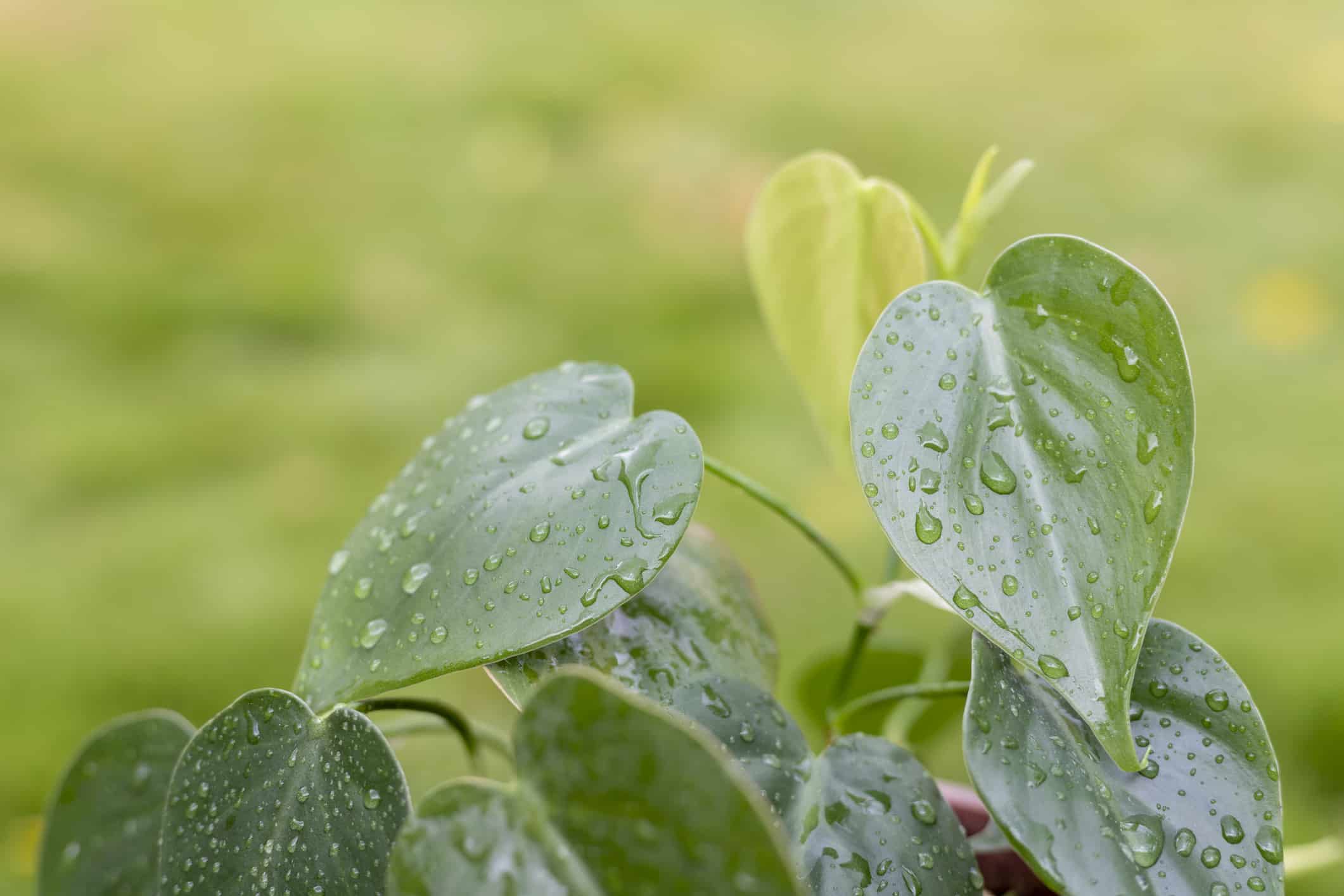So, you’re here because you’re looking to add some greenery to your home or apartment. Whether this is your first house plant, or you have dozens already, it’s always a good idea to research your desired plant before taking it home.
When choosing a plant, keep your schedule in mind. If you are busy often and/or travel a lot, you’ll want to gravitate towards a low-maintenance option.
The place you live is another important factor to consider. Even if you are caring for the plant indoors, it’s easier to care for native plants than invasives. Plus, if your plant seeds or propagates, a native won’t endanger the environment.
If you determined that your schedule and environment work to care for a heartleaf philodendron, keep reading. We’ll go over nine tips to keep your plant healthy and happy.
About the Heartleaf Philodendron

The scientific name of the heartleaf philodendron is
Philodendron hederaceum.
©Cheng Wei/Shutterstock.com
The heartleaf philodendron is an evergreen foliage plant native to South and Central America as well as the West Indies. The plant thrives in tropical climates. It is nicknamed the sweetheart plant due to the shape of its leaves.
When first sprouting, the leaves emerge bronze-color and then morph into a dark green as they develop. In rare cases, a mature plant may produce small greenish-white flowers.
The plant grows slowly but can live for decades if cared for properly. A mature plant will grow one to three feet wide and three to 13 feet long.
Before Bringing Home Your Heartleaf Philodendron
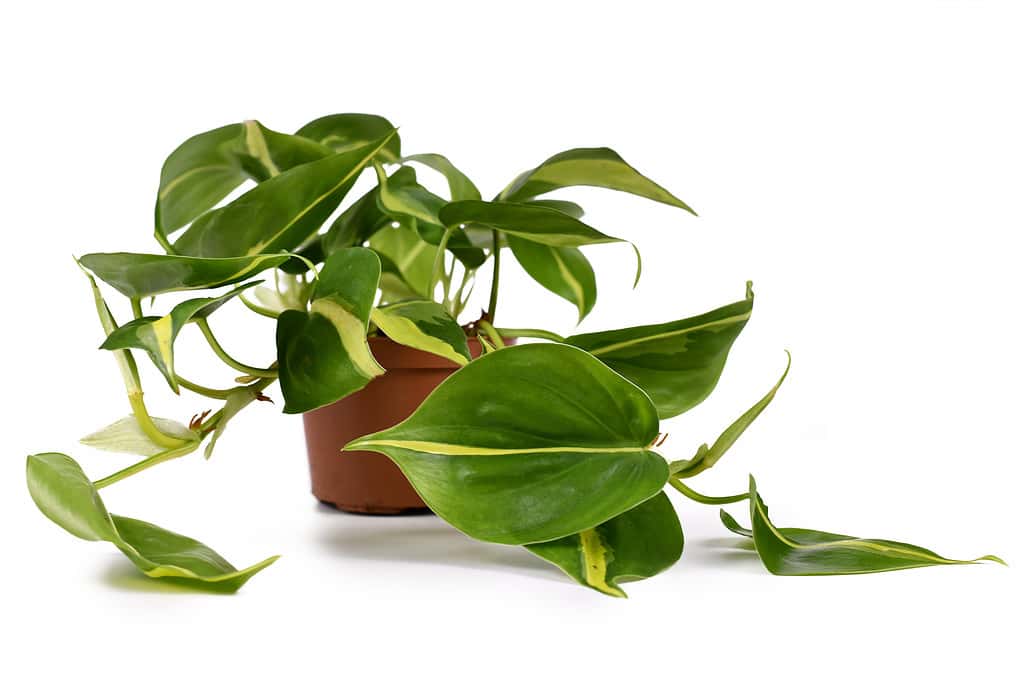
It’s important to have the necessary supplies ready before you bring a new plant home.
©Firn/ via Getty Images
You’ll need the following to care for your plant at home:
- A lightweight pot with plenty of drainage (a hanging pot is recommended)
- Pruning shears
- Gardening gloves
- A watering can
- A humidifier
- Compost
- Fertilizer
- Peat moss or Cow peat
- Perlite
- Well-draining potting mix
9 Tips to Maintain a Healthy Heartleaf Philodendron Plant
#1 Make Sure They Get the Right Amount of Light
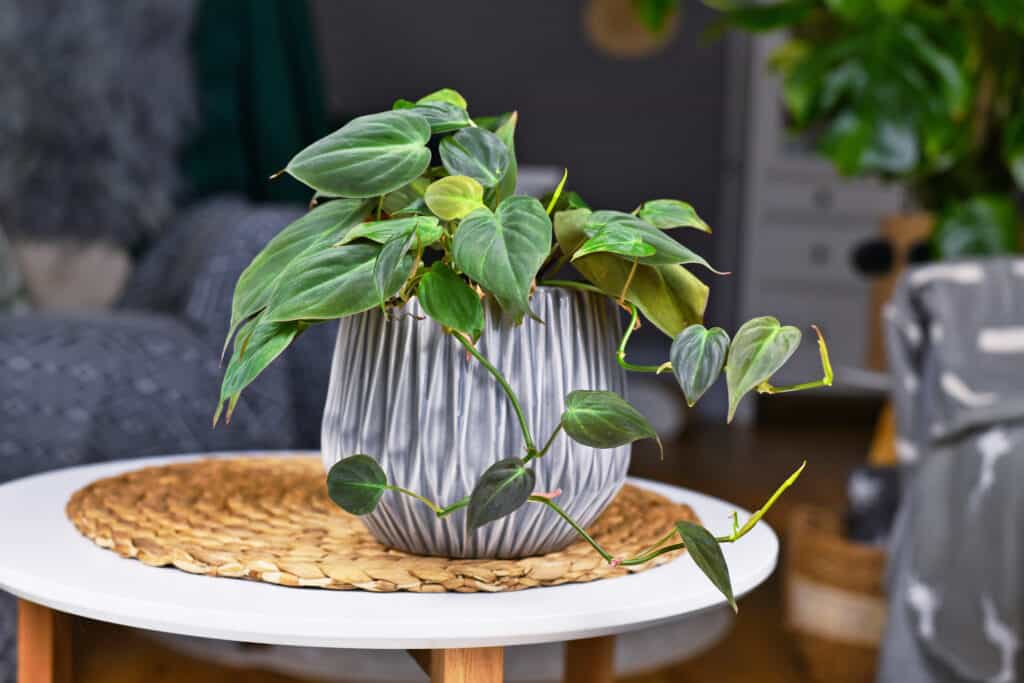
The
Philodendron hederaceumis best suited for tropical environments.
©iStock.com/Firn
Philodendrons thrive in ample amounts of indirect sunlight. They need at least five hours per day to grow large, healthy leaves and thick, sturdy vines.
If you are living in a place where the heartleaf is native, you can bring your plant outside during the summer. Leave the plant in a shady spot to avoid direct afternoon sun. The sun in the early morning tends to be weaker, so the leaves can withstand the heat.
Remember to bring your plant inside during the winter. If you are growing the heartleaf near a window or door, protect it from cold drafts.
During seasons with less sun, the plants do better with indirect natural light than LEDs. Again, plan to only care for plants native to your area.
#2 They Love Moist Soil

The heartleaf philodendron is generally easy to care for.
©iStock.com/Amphawan Chanunpha
The heartleaf philodendron thrives with well-draining soilless potting mix. Be sure to get a mix that includes plenty of peat moss. Add perlite to increase the draining and help your plant thrive.
Soilless potting mixes do not contain nutrients naturally. Read the bag before you choose a mix to ensure included nutrients. Otherwise, add some slow-release fertilizer to the mixture before potting.
You can also combine peat moss, perlite, fertilizer, and vermiculite to create your own potting mix.
#3 Keep Your Home Humid
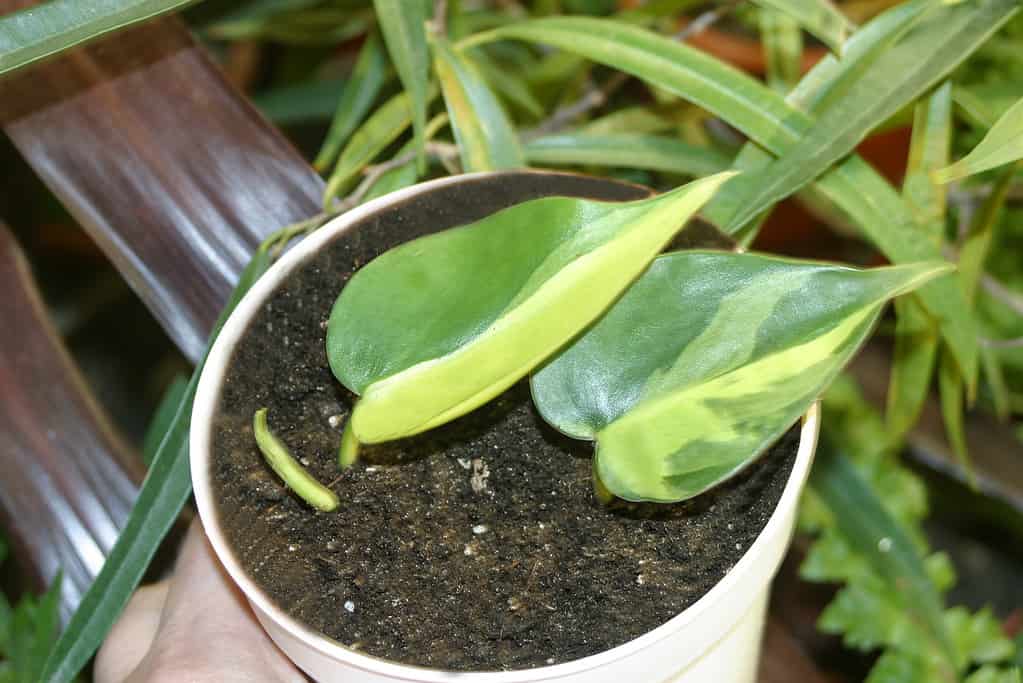
The heartleaf philodendron has variegated leaves.
©Olena Troshchak/ via Getty Images
The heartleaf philodendron is a tropical plant that should only be grown and cared for in the regions it’s native to. If you live in a place that naturally has these plants, you don’t have to worry about this step.
If you decide to keep a heartleaf philodendron in a non-native environment, you’ll need to make accommodations to keep the plant happy. Purchase a humidifier and keep it running constantly. The plant will not thrive unless you do so.
This might sound unnecessary, but you won’t get beautiful, strong leaves or stems without it. The easiest option is to stick with native plants. You could also move to an area where the plant is native.
#4 Fertilize When Necessary
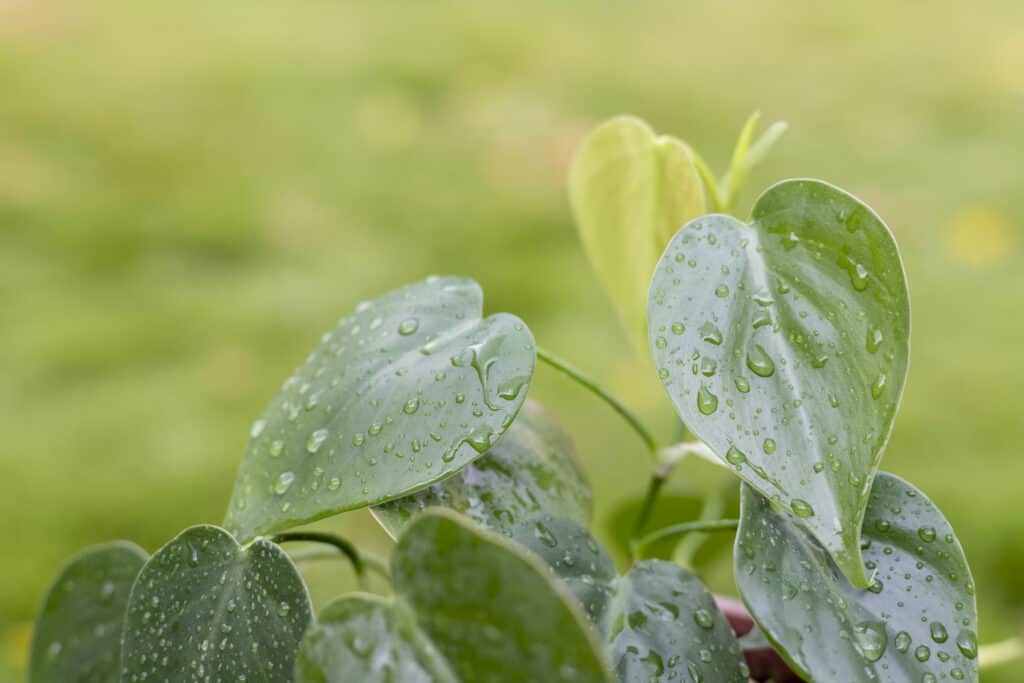
The heartleaf philodendron is easy to propagate.
©iStock.com/Bilal photos
This rule applies to any new house plant you decide to bring home. Fertilizer helps new plants adjust to a new home, pot, and lifestyle. It also allows them to grow more easily.
For the heartleaf philodendron, apply diluted fertilizer once or twice during the active growing seasons of spring and summer. Do not provide fertilizer in the winter.
If you notice your heartleaf philodendron sprouting new leaves, it is the perfect time to add a bit of fertilizer.
#5 Prune Every Once in a While
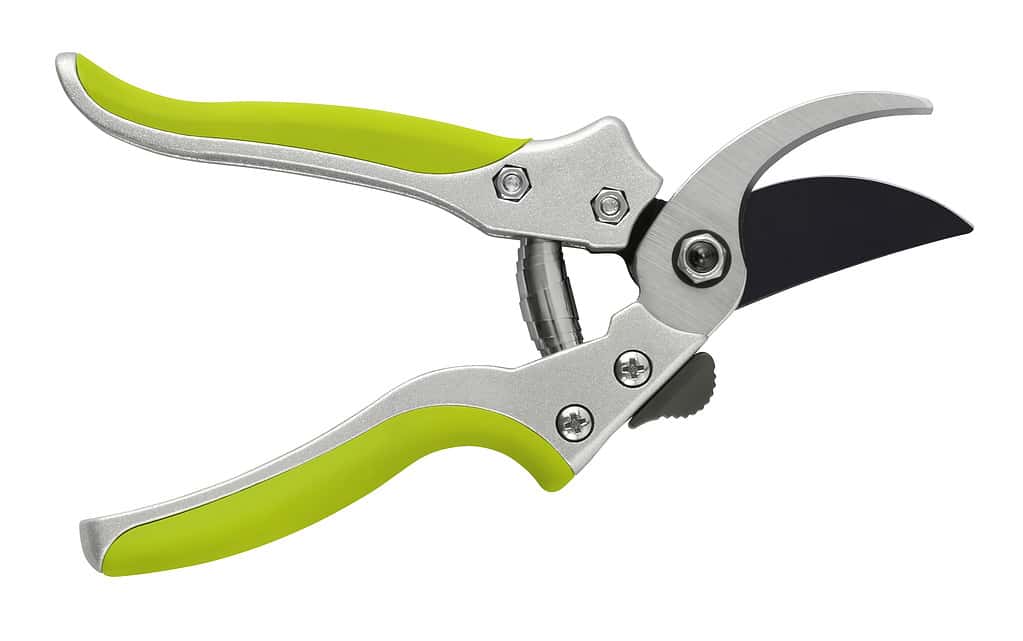
Use gloves when pruning your heart-leaf philodendron.
©Visivasnc/ via Getty Images
You can either let your plant roam and grow long or work to create a bushy and full shape. Either way, your heartleaf philodendron will need pruning.
You’ll want to snip the stems beneath the leaf nodes. The process will help your plant produce more foliage rather than stretching out as far as it can go. If you want more plants, you can also propagate these cuttings in water.
Otherwise, you’ll want to prune dead or yellowed leaves every once in a while.
#6 Get Rid of Pests
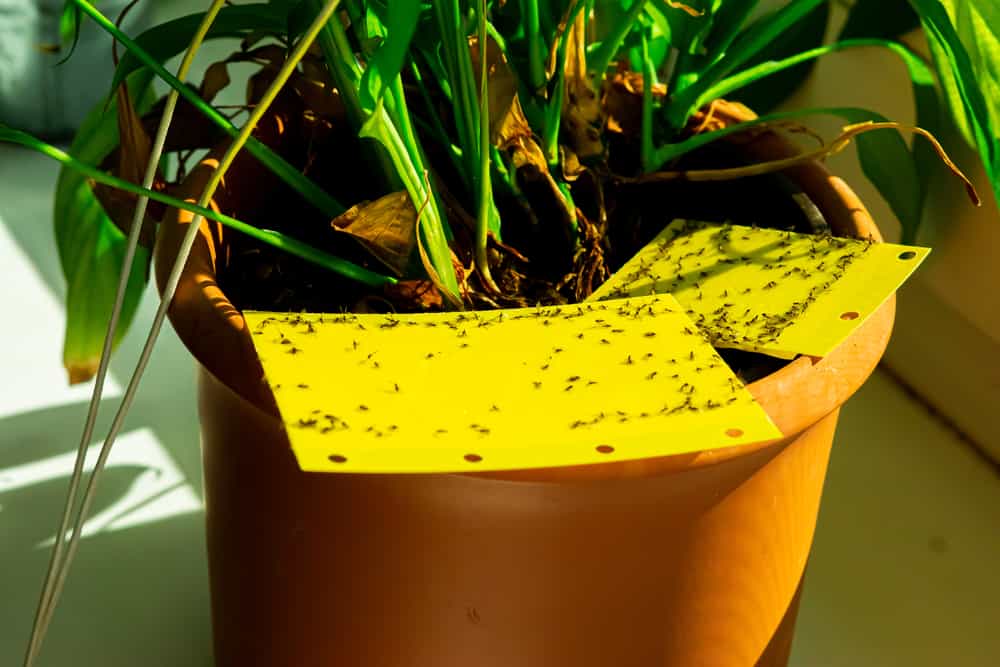
Fungus gnats will lay eggs in the moist soil of your philodendron if unmanaged.
©MarcOliver_Artworks/Shutterstock.com
Though heartleaf philodendrons need regular levels of humidity, this can also attract bugs and unwanted pests. The plants are particularly susceptible to fungus gnats.
Your best bet to avoid these insects is to allow the soil to dry well between waterings. You might also need to dry off the leaves if they collect water drops.
Prepare a diluted vinegar wash or horticultural oil to deal with other pests including aphids, mealy bugs, and spider mites. You can also lay sticky traps around the plant on top of the soil if there are many.
#7 Water, But Don’t Overwater
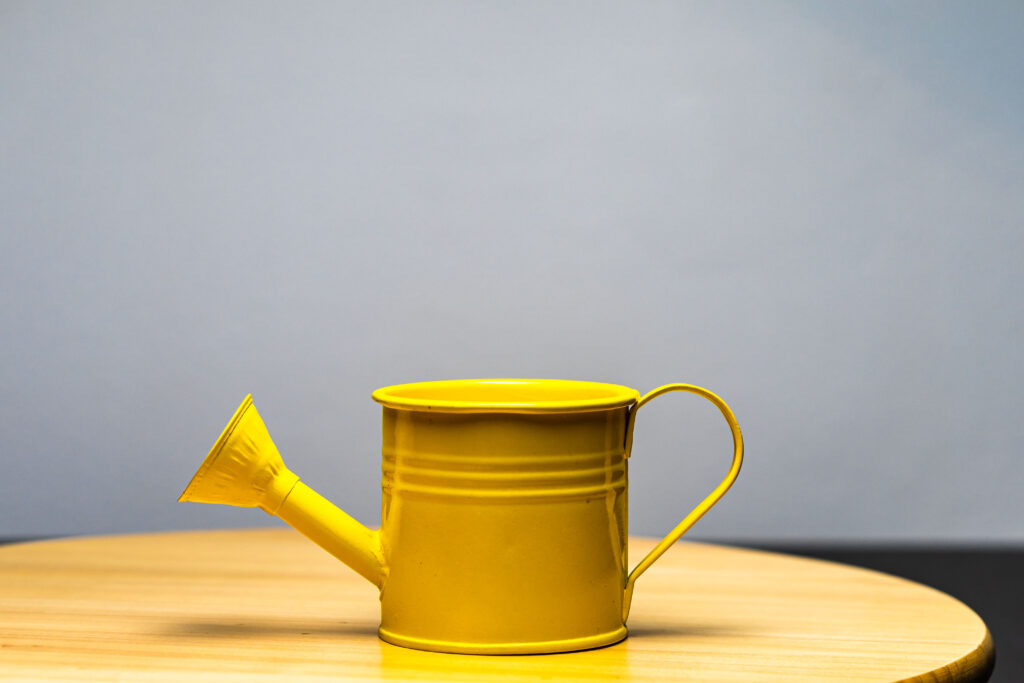
Create a watering schedule that works for you and your plants.
©iStock.com/Wirestock
Keeping your heartleaf philodendron on a regular watering schedule will be good for both you and your plant. You benefit from pre-planning and your plant benefits from water on a regular basis.
For watering philodendrons, base your schedule on the moisture present in the soil. Check the soil by sticking a finger in to about the second knuckle. If it comes out dry, it’s time to water. Use room temperature water and let extra moisture drain from the pot.
If you’re unsure, leave the plant un-watered for a few days then check again. Reduce watering in the winter months.
#8 Keep Away from Pets
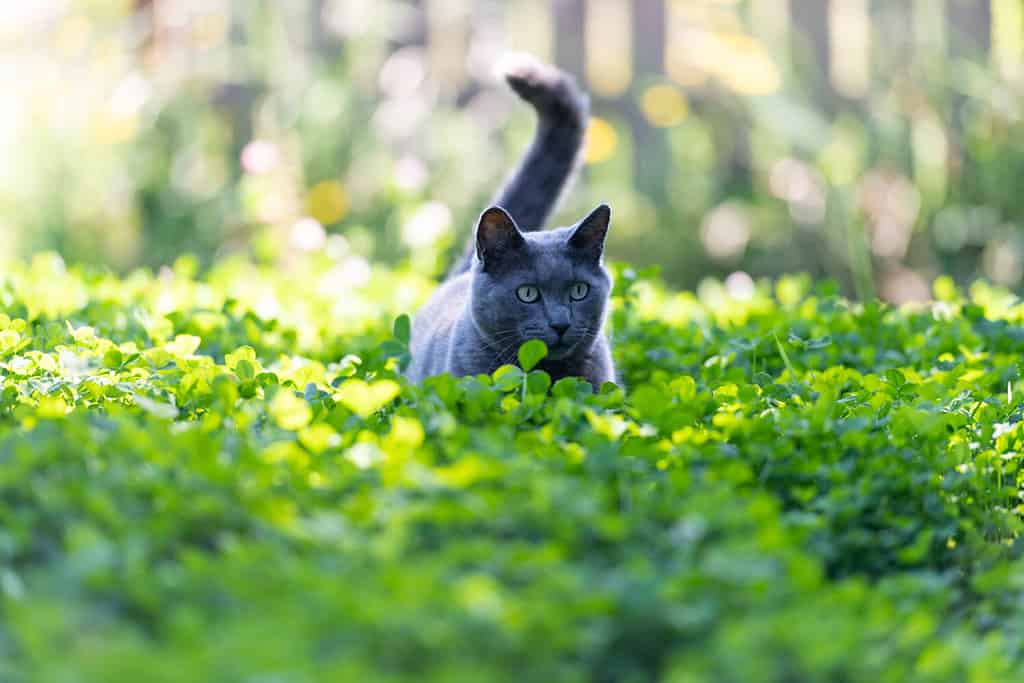
Hang your heart-leaf Philodendrons from the ceiling by a window so your pets don’t eat it.
©Anna Hoychuk/Shutterstock.com
Unfortunately, heartleaf philodendrons are poisonous to both humans and animals. When you bring your plant home, it’s recommended to repot it immediately in a hanging pot.
Place the ceiling hook by a window, but far enough away so that cats can’t potentially nibble on the leaves. If you keep your plant bushy, the animals will be less likely to snack on chunks.
If you notice that your plant has bite marks, check on your animal. If you notice symptoms that include drooling, pawing at their mouth, decreased appetite, or vomiting, take them to the vet immediately.
#9 Repot Every Few Years
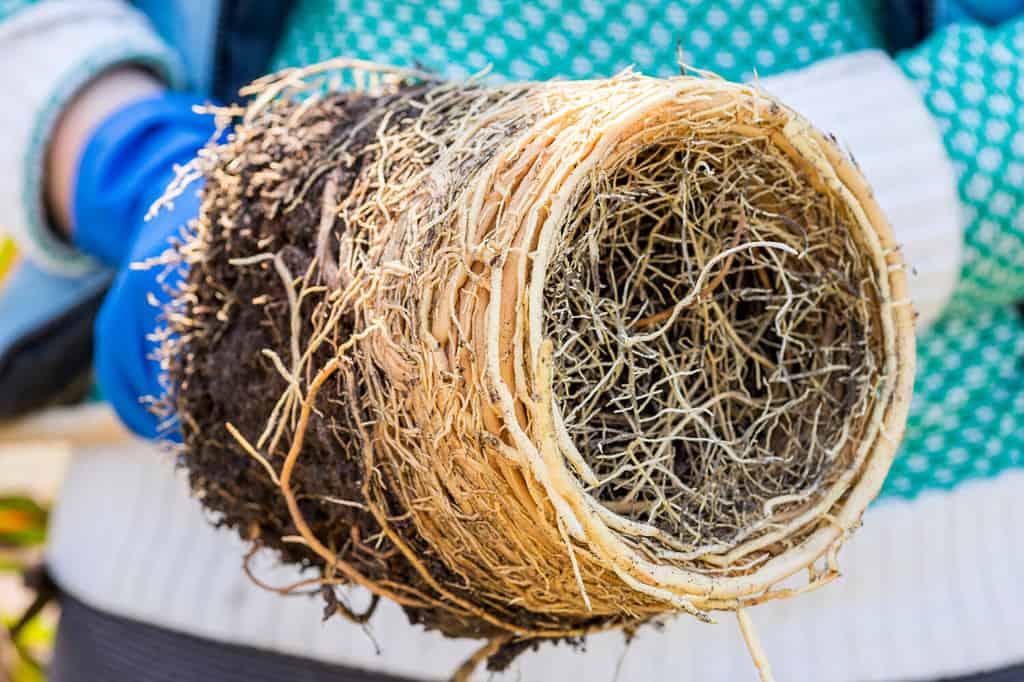
Repot your indoor plants outside.
©Andrii Spy_k/Shutterstock.com
If you are properly caring for your heartleaf philodendron in a place it natively grows, you can get away with repotting your plant once every two to three years.
It is important to repot your plants to help prevent root rot and keep the root system healthy. You might need to buy a bigger lightweight pot due to foliage and root growth.
To repot, find a clear spot outside. Fill the new pot three-fourths full of a high-quality, well-draining potting mix. Carve out a hole in the center to put the roots into.
Gently loosen the potting soil around the roots with your gloved hands. Do not use a shovel because it will damage the roots. Lift the philodendron out of the pot and carefully place it in the new pot. Add potting soil until the roots are well-covered. Lightly water the plant.
Common Problems
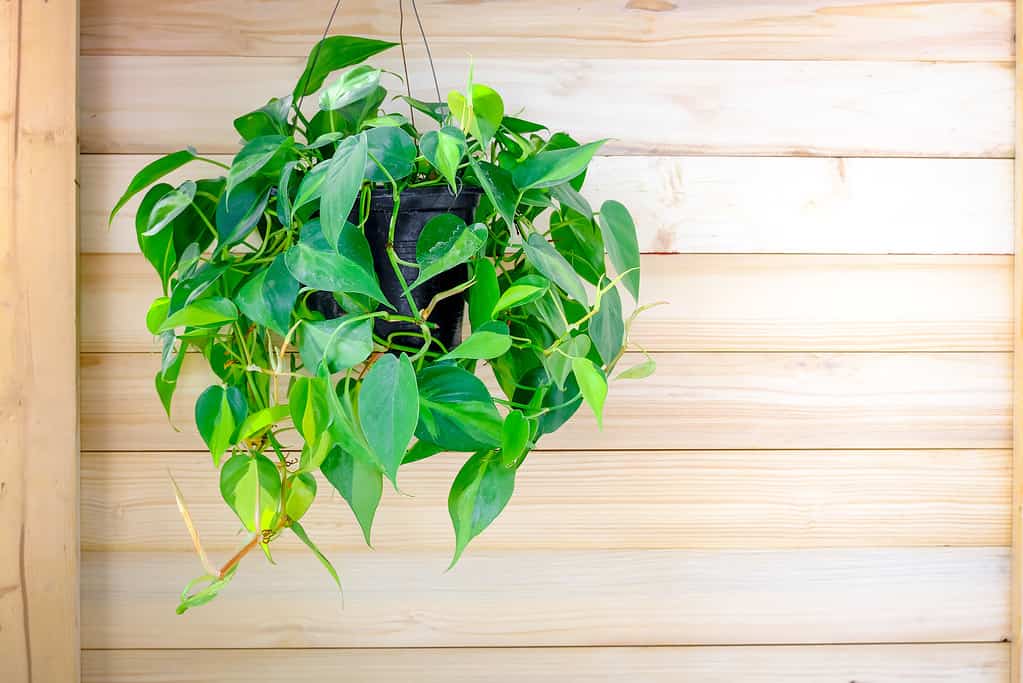
Any plant can run into issues depending on the environment.
©M.photostock/ via Getty Images
Though one of the easier plants to care for indoors, the heartleaf philodendron can still face issues. Do not panic if you see these symptoms. Simply take a deep breath and get to work changing the circumstances.
In most cases, you’ll be able to revive your heartleaf philodendron and it’ll look good as new.
Yellow and Curling Leaves
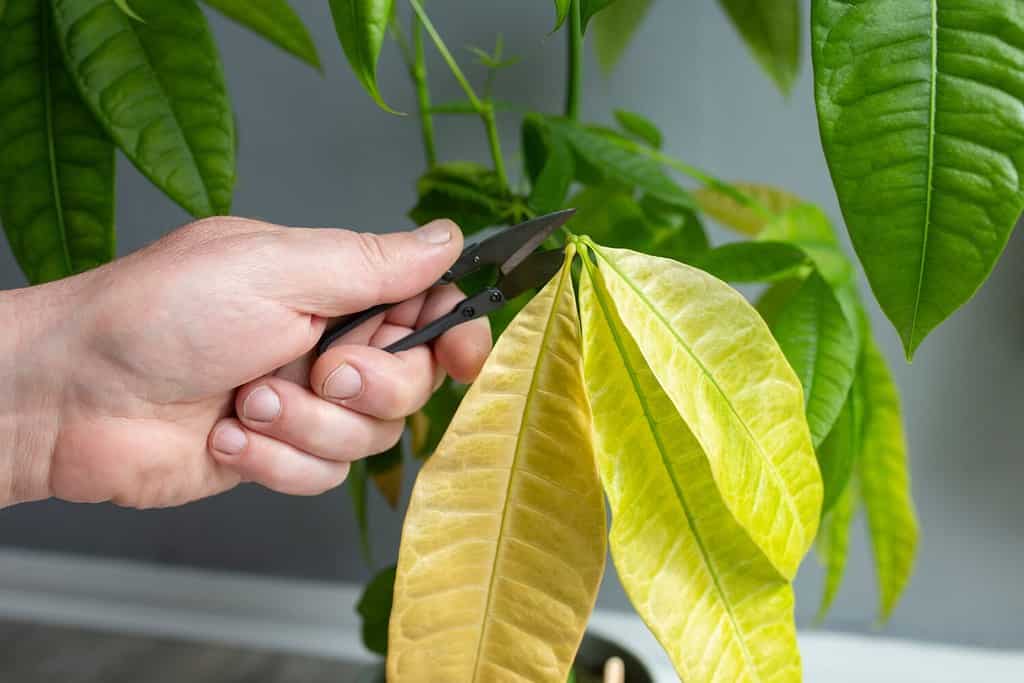
Like the Pachira Aquatica plant, heart-leaf philodendrons need yellowing leaves pruned.
©rigsbyphoto/Shutterstock.com
The most common problem seen in growing heartleaf philodendrons is yellowing leaves. These leaves indicate too much water or too little light.
You can water these plants about once a week, and they will thrive. The top inch of soil can get quite dry before you need to worry.
As for sunlight, make sure they are getting indirect exposure to plenty of sun each day. They will not survive in dark rooms or in direct sunlight.
If you notice yellowing leaves, prune them. Then adjust your water schedule or move the plant to a place with plenty of indirect sunlight.
Brown and Crispy Leaves
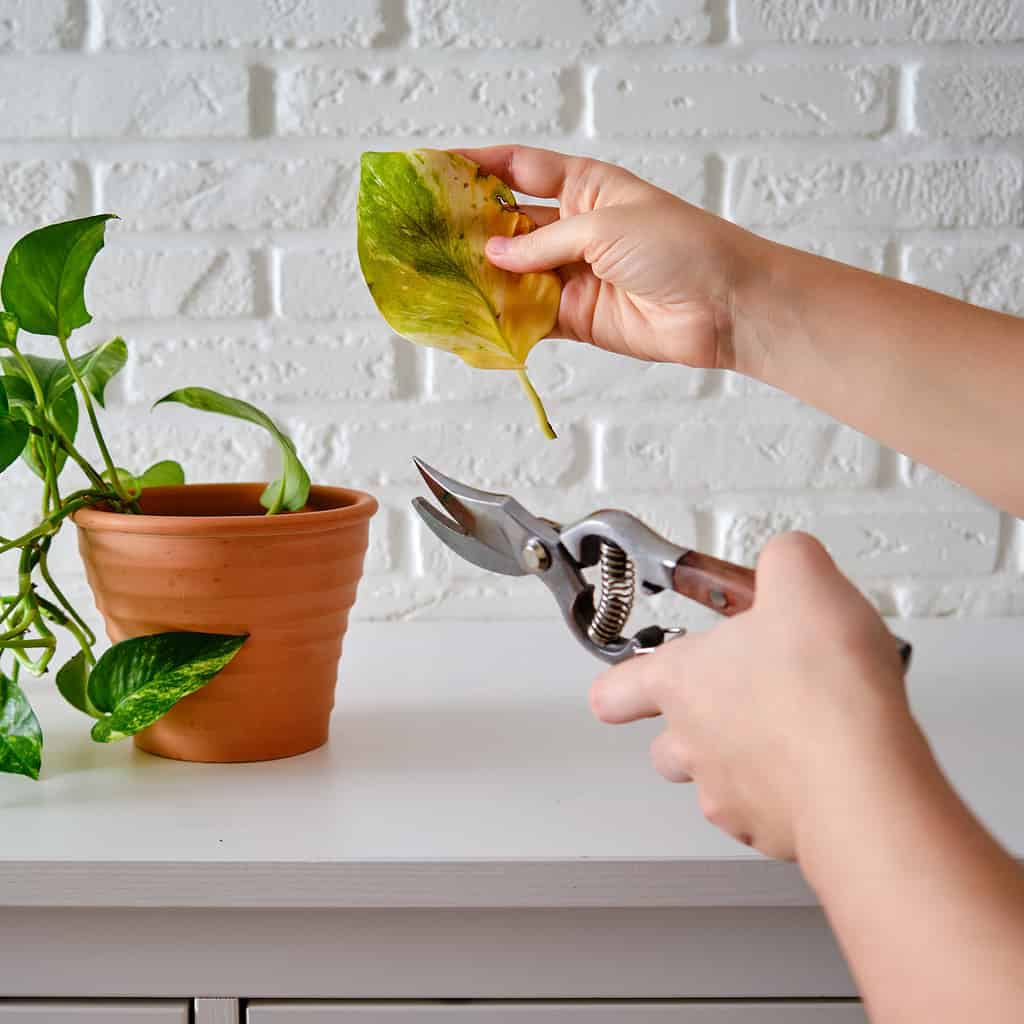
Like the Epipremnum, heartleaf philodendrons need brown leaves pruned.
©iStock.com/Andrey Zhuravlev
If you see browning leaves that look like they’ve been scorched by the sun, it could be one or two things. It could be the sun, or it could be too much fertilizer.
If it’s the sun, move your heartleaf philodendron to a place where it can still soak in the rays without the direct heat. If it’s fertilizer, you can do a few things:
- Remove fertilizer sticks and damaged foliage.
- Allow water to run through the roots and leech away the fertilizer.
- Wait at least a month before feeding your plant again.
- Repot the plant with a new mix.
Long Stems, Few Leaves
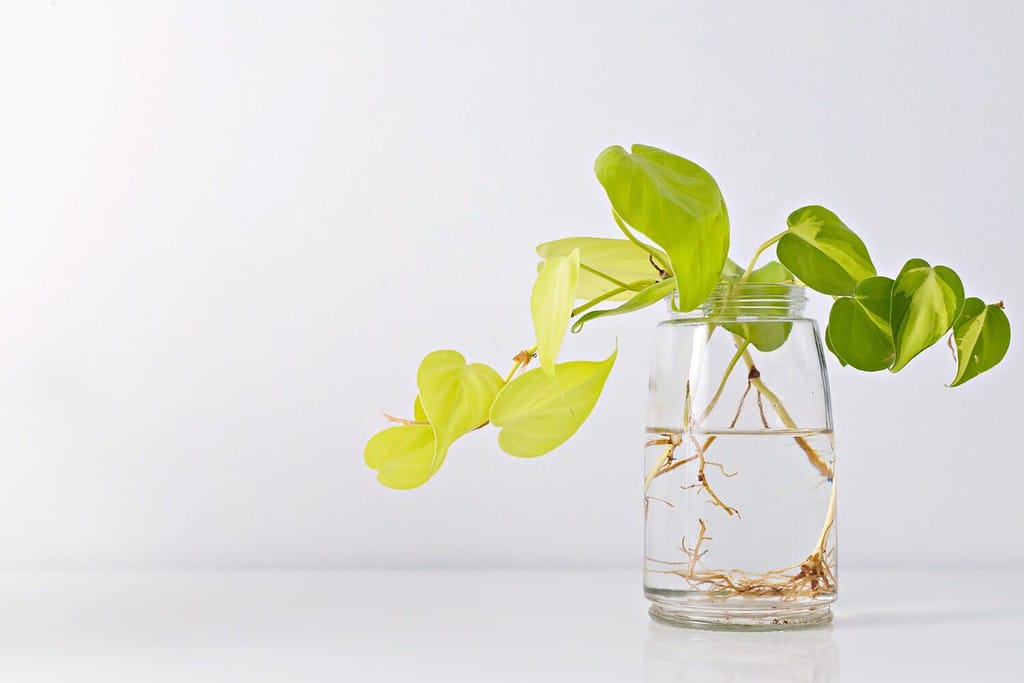
The philodendron has large green heart-shaped leaves on thick vines.
©AngieYeoh/Shutterstock.com
If you do not regularly pinch off the stems of the heartleaf philodendron, they can grow quite long. In some cases, the leaves will be quite sparse along the stems. They’ll usually have a bunch of leaves at the end.
This is only an issue if you want a denser, bushier plant or if you have animals that could eat the longer stems.
Pinch off the stems regularly at a point just above the leaf node in this case. You can use these pinched-off stems to propagate new plants.
Thank you for reading! Have some feedback for us? Contact the AZ Animals editorial team.

